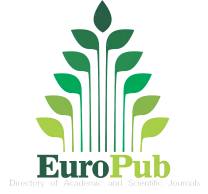Editor-in-Chief:
Peixin Dong,
Department of Obstetrics and Gynecology, School of Medicine, Hokkaido University, Sapporo, Japan
ISSN: 2998-8772 (Online)
Frequency: semiyearly
Submission to final decision:
60-90 days
Acceptance to publication: 15 days
Category:
Endocrinology & Metabolism
Reproductive Biology
Obstetrics & Gynecology
© 2025 The Author(s). Published by Exploration and Verfication Publishing




